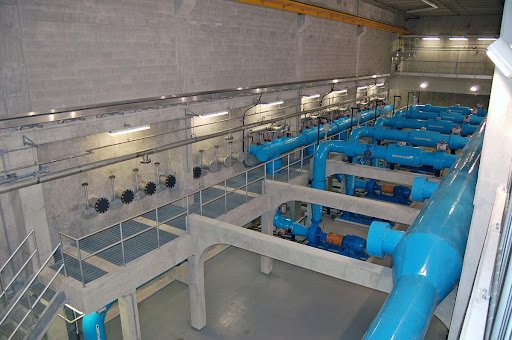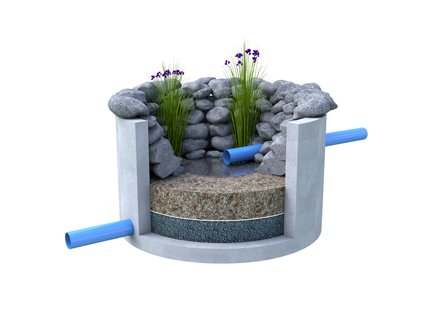Our Surface Water Treatment Systems service offers comprehensive solutions for purifying water from rivers, lakes, reservoirs, and other surface water sources. These systems are designed to remove impurities and pathogens, ensuring that the treated water is safe for drinking, industrial use, or other applications.
Process Overview:
Surface water treatment entails several phases of physical, chemical, and occasionally biological treatments to remove impurities such as suspended particles, organic debris, bacteria, and other pathogens. The goal is to generate high-quality water that meets regulatory criteria and is suitable for consumption or usage in a variety of sectors.
Details:
Intake and Screening:
Water Intake: Water is drawn from surface sources like rivers, lakes, or reservoirs. The intake structure is designed to minimize the entry of large debris and aquatic organisms.
Screening: The raw water passes through screens to remove large particles, debris, and aquatic life, protecting the treatment equipment from damage and clogging.
Coagulation and Flocculation:
Coagulation: Chemicals, known as coagulants (e.g., aluminum sulfate, ferric chloride), are added to the water to destabilize suspended particles. These particles, which are typically too small to settle out on their own, begin to clump together.
Flocculation: The water is then gently stirred in flocculation tanks, allowing the small particles to aggregate into larger clusters called flocs. This process improves the efficiency of subsequent sedimentation and filtration steps.
Sedimentation:
Clarification: In sedimentation tanks, the water is allowed to sit undisturbed, enabling the heavier flocs to settle to the bottom as sludge. This process removes a significant portion of the suspended solids from the water.
Sludge Removal: The settled sludge is periodically removed from the bottom of the tanks for further treatment or disposal.
Filtration:
Media Filtration: The clarified water passes through filters composed of layers of sand, gravel, and sometimes activated carbon. These filters remove any remaining suspended solids, as well as some dissolved contaminants. The choice of filter media depends on the specific water quality and treatment requirements.
Membrane Filtration: In some cases, advanced membrane filtration techniques like microfiltration or ultrafiltration are used to remove smaller particles and pathogens, providing an additional level of purification.
Disinfection:
Chemical Disinfection: Disinfectants such as chlorine, chloramine, or chlorine dioxide are added to the filtered water to kill harmful bacteria, viruses, and other microorganisms. This step ensures that the water is safe for human consumption.
UV Disinfection: Ultraviolet (UV) light can also be used as a physical method of disinfection. UV systems inactivate microorganisms by damaging their DNA, preventing them from reproducing and causing harm.
Post-Treatment:
pH Adjustment: The pH of the treated water is adjusted, if necessary, to ensure it is stable and non-corrosive, preventing damage to pipes and infrastructure.
Corrosion Inhibitors: In some systems, corrosion inhibitors are added to protect distribution pipes and prevent the leaching of metals like lead and copper into the water.
Fluoridation: In some cases, fluoride is added to the treated water to help prevent tooth decay, following public health guidelines.
Applications:
Our Surface Water Treatment Systems are suitable for a wide range of applications, including:
Municipal Water Supply: Providing clean, safe drinking water for cities and towns, ensuring compliance with local and international water quality standards.
Industrial Use: Supplying high-quality water for industrial processes, such as cooling, manufacturing, and chemical production, where water quality is critical.
Agricultural Irrigation: Treating water for use in irrigation, ensuring crops receive clean water free from harmful contaminants.
Advantages:
Comprehensive Treatment: Our systems address a wide range of contaminants, ensuring the highest quality of treated water.
Customizable Solutions: We design systems tailored to your specific water source and treatment needs, ensuring optimal performance and efficiency.
Regulatory Compliance: Our solutions ensure that treated water meets or exceeds all relevant regulatory standards, providing peace of mind for public and environmental safety.
Sustainability: By efficiently treating surface water, our systems help conserve water resources and reduce the environmental impact of water treatment processes.
Our Surface Water Treatment Systems are designed to provide dependable, high-quality water treatment for any application, resulting in safe and sustainable water use. Whether for municipal, industrial, or agricultural applications, our systems have the technology and knowledge to successfully manage surface water.




